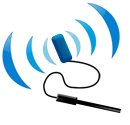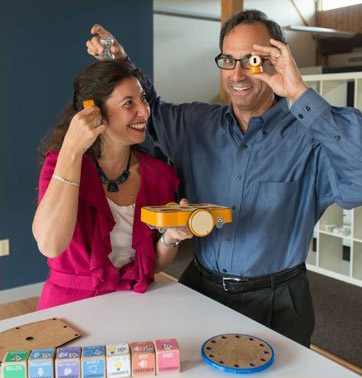What's New
 Probeware running on personal computers has been used by students since 1982 to measure and explore the world around them. In the past probeware was delivered as an application you installed on your computer. The Concord Consortium is introduced another innovation—probeware activities that run directly in your browser.
Probeware running on personal computers has been used by students since 1982 to measure and explore the world around them. In the past probeware was delivered as an application you installed on your computer. The Concord Consortium is introduced another innovation—probeware activities that run directly in your browser.
There are huge advantages when probeware can run directly in a browser. The software does not need to be installed by the IT department for you to begin using it. Data created in a web application can be automatically saved for you and made available on any other computer you use. The graphs and data can be easily shared with other people.
Another innovation is that probeware companies now offer wireless options for their interfaces and probes making them flexible and less cumbersome. See Vernier's GoDirect and PASCO's new wireless probes.
Research and Development At Concord
 Our early system at Concord supported collecting data from Vernier probes with the Go!Link interface using an invisible Java applet that collects data and and hands it off to the web application for graphing and analysis. We are very hopeful that other probeware vendors will implement the capability so their probes can work in the browser.
Our early system at Concord supported collecting data from Vernier probes with the Go!Link interface using an invisible Java applet that collects data and and hands it off to the web application for graphing and analysis. We are very hopeful that other probeware vendors will implement the capability so their probes can work in the browser.
In recent years the Concord Consortium launched a project called Information Technology In Science Inquiry (ITSI): Probes and Models Across the Curriculum. This is a comprehensive project which offers online activities for middle and high school teachers. You may run one of our ITSI inquiry-based science activities using commercial probes. Or build your own probes with our Do it Yourself Probekit–a great activity to explore how probes work.
The Concord Consortium's Mixed-Reality Labs Project funded by the National Science Foundation has set out to develop cyberlearning technologies that promise to narrow the gap for students between data and concepts. Our key strategy is to seamlessly combine the visualization power of simulations and the investigation power of sensors to enhance the learner's perception of reality.
In 2012 the Concord Consortium found a way to stream Arduino data to a browser without Flash or Java. And in 2017 also at Concord we used more robust method of connecting Bluetooth Low Energy sensors using Web Bluetooth in a Chrome browser.
Arduino
 The first Arduino board was introduced in 2005 to help inexperienced students create working prototypes connecting the physical world to the digital world. Today there are Arduino boards for students all levels. "Arduino Education offers solutions for the classroom, kits, bundles and boards with learning paths for individual and collaborative educational approaches. Learners explore Arduino in a hands-on, constructive way as they work through the kits and explore the creative capabilities of each board." Read more at Arduino.
The first Arduino board was introduced in 2005 to help inexperienced students create working prototypes connecting the physical world to the digital world. Today there are Arduino boards for students all levels. "Arduino Education offers solutions for the classroom, kits, bundles and boards with learning paths for individual and collaborative educational approaches. Learners explore Arduino in a hands-on, constructive way as they work through the kits and explore the creative capabilities of each board." Read more at Arduino.
KinderLab Robotics
 If you want activities for kindergarten children, look into KinderLab. KinderLab Robotics is dedicated to providing research-based robot kits to every young child. Robotics in early learning introduces STEAM concepts in a playful way and gets even the youngest learners excited about Science, Technology, Engineering, Arts and Math!
If you want activities for kindergarten children, look into KinderLab. KinderLab Robotics is dedicated to providing research-based robot kits to every young child. Robotics in early learning introduces STEAM concepts in a playful way and gets even the youngest learners excited about Science, Technology, Engineering, Arts and Math!
KIBO Kits Growing with KIBO - A Progressive Robotics Curriculum for Grades K-2 was designed to support early elementary classrooms with a complete, sequenced STEAM curriculum covering robotics, coding, and computational thinking - in addition to providing opportunities for integrating these topics with arts and literacy activities. For purchase is the 'Growing with KIBO' Guide - Providing 60 hours of Robotics Curriculum!
Texas Instruments SensorTags
The new SensorTag IoT kit invites you to realize your cloud-connected product idea. The new SensorTag now includes 10 low-power MEMS sensors in a tiny red package. And it is expandable with DevPacks to make it easy to add your own sensors or actuators. Connect to the cloud with Bluetooth low energy and get your sensor data online in 3 minutes. The SensorTag is ready to use right out the box with an iOS and Android app, with no programming experience required to get started.
